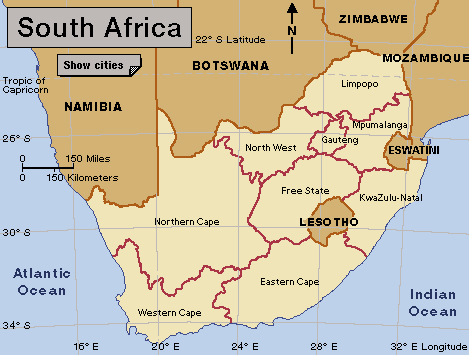Cape Colony was a European colony in southern Africa. It covered the southern and western part of what is now the country of South Africa.
The Dutch East India Company, a powerful trading company, founded the Cape Colony in 1652 as a supply station at the present site of Cape Town. The British took over the colony in 1795. They gave the colony back to the Dutch state in 1803 but reoccupied it in 1806. In 1814, the Dutch recognized the Cape as a British colony.
The Cape Colony dramatically expanded its boundaries through a long series of frontier wars between British and Dutch forces and settlers and indigenous (native) groups. By the late 1800’s, the colony covered more than 250,000 square miles (650,000 square kilometers). Many of the settlers were people of Dutch, German, and French descent who came to speak a Dutch-based language now known as Afrikaans. These settlers were sometimes called Boers (farmers), and are now called Afrikaners. The indigenous (native) groups in the colony included the Khoikhoi, San, and Xhosa. Many Asians and Africans were brought to the colony as slaves from the mid-1600’s to the early 1800’s.

Many Dutch-speaking settlers resented British rule and left the colony in the 1830’s. They later founded the South African Republic (Transvaal) and the Orange Free State. These republics invaded the Cape Colony during the Anglo-Boer War of 1899-1902 (also called the South African War) between the republics and the British Empire. The British won the war after a bitter struggle.
In 1910, the Cape Colony, Natal, the Orange Free State, and the South African Republic became provinces of the Union of South Africa (now the Republic of South Africa). The Cape Colony became Cape Province. In 1994, Cape Province was split into three provinces: Eastern Cape, Western Cape, and Northern Cape. A northeastern section of Cape Province became part of the new province of North West.
